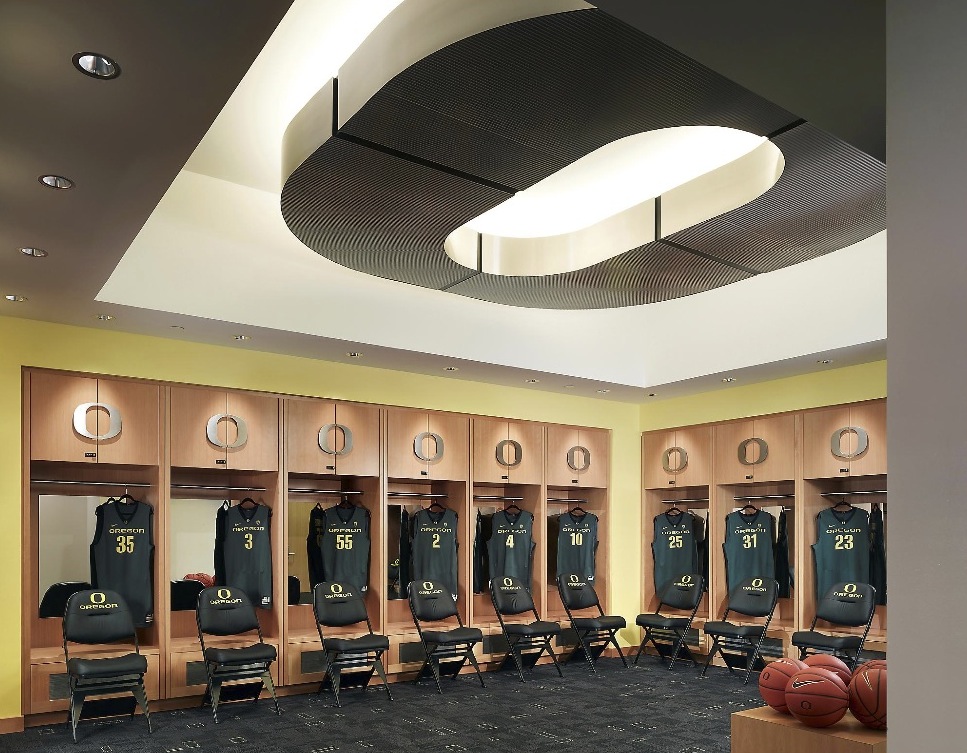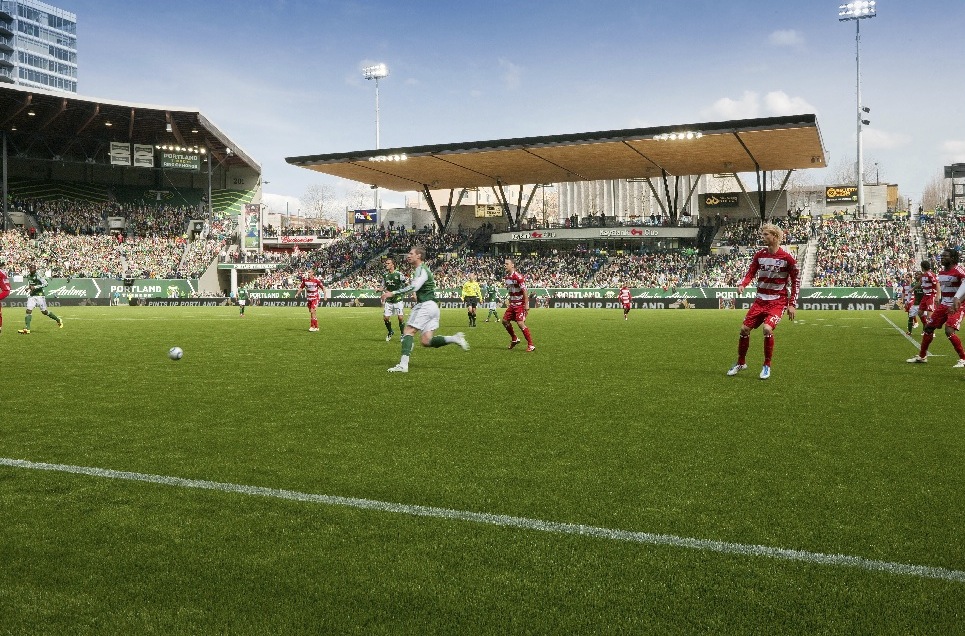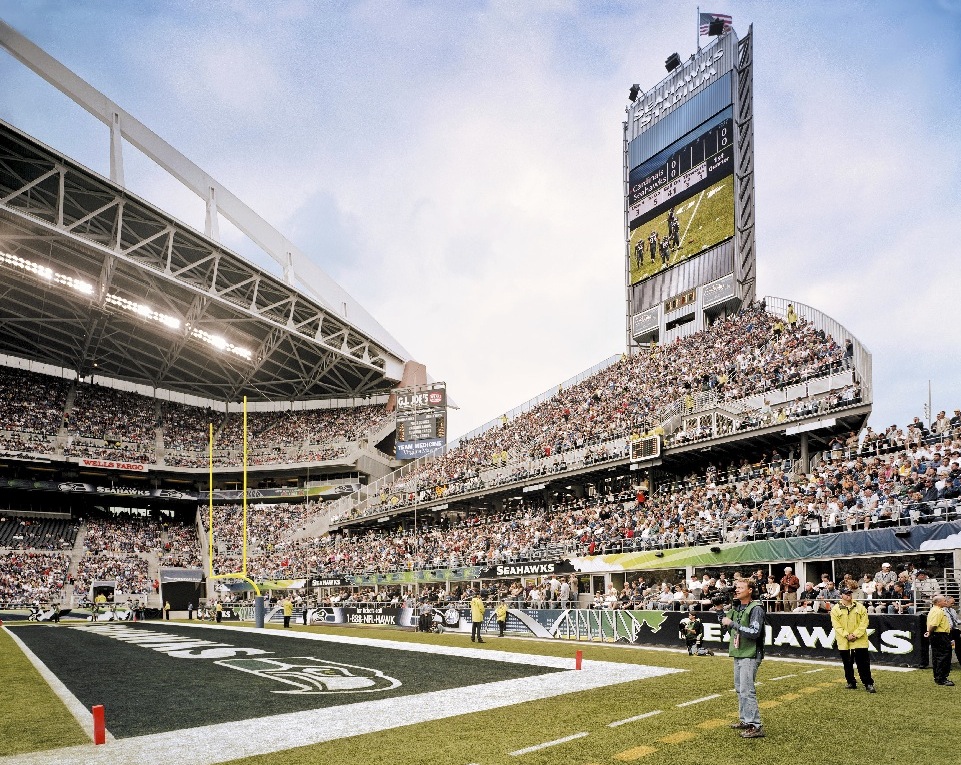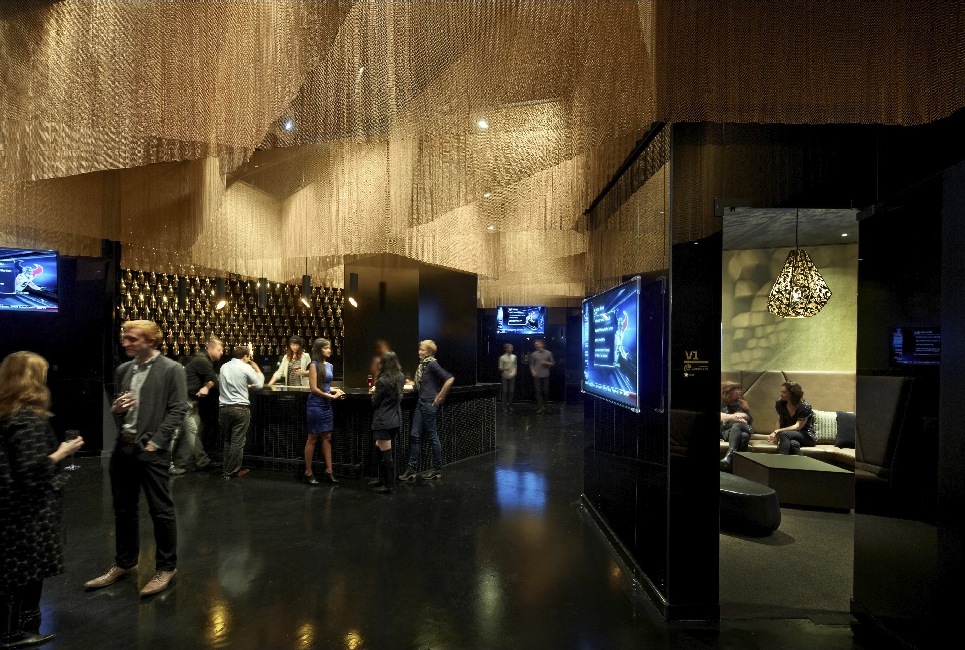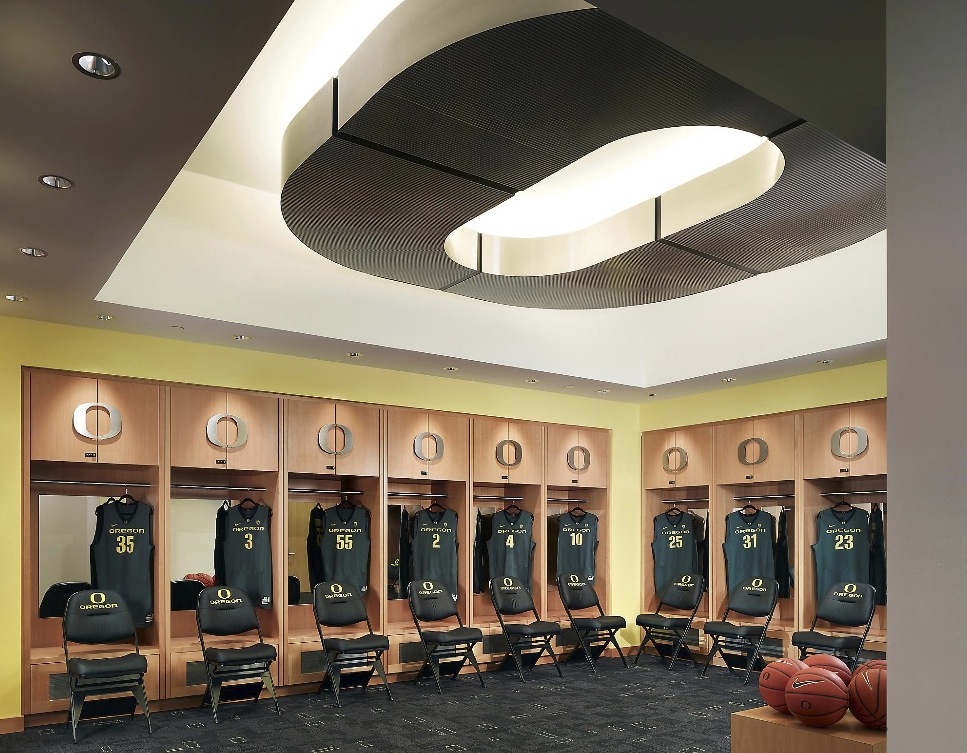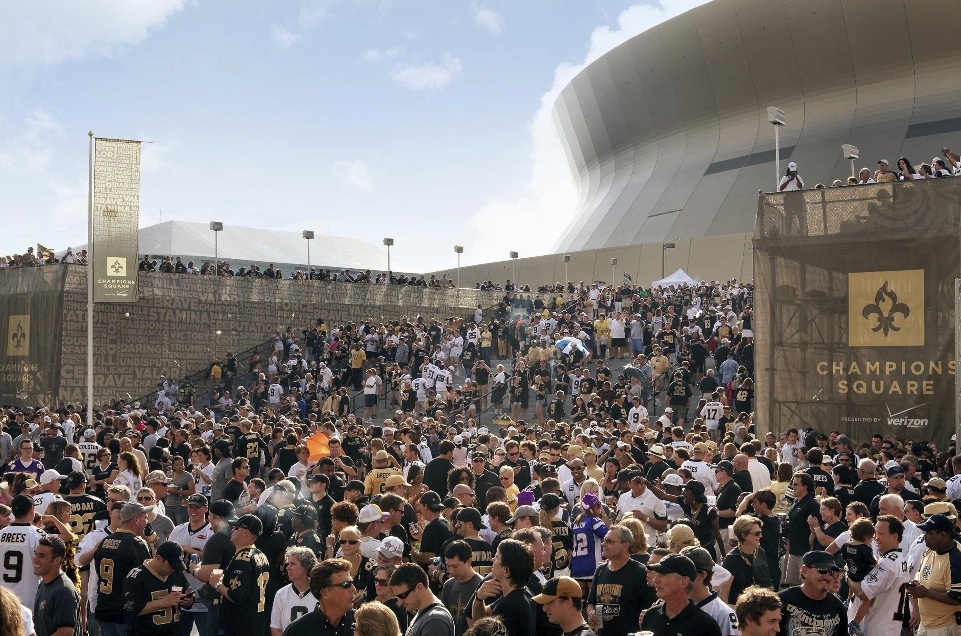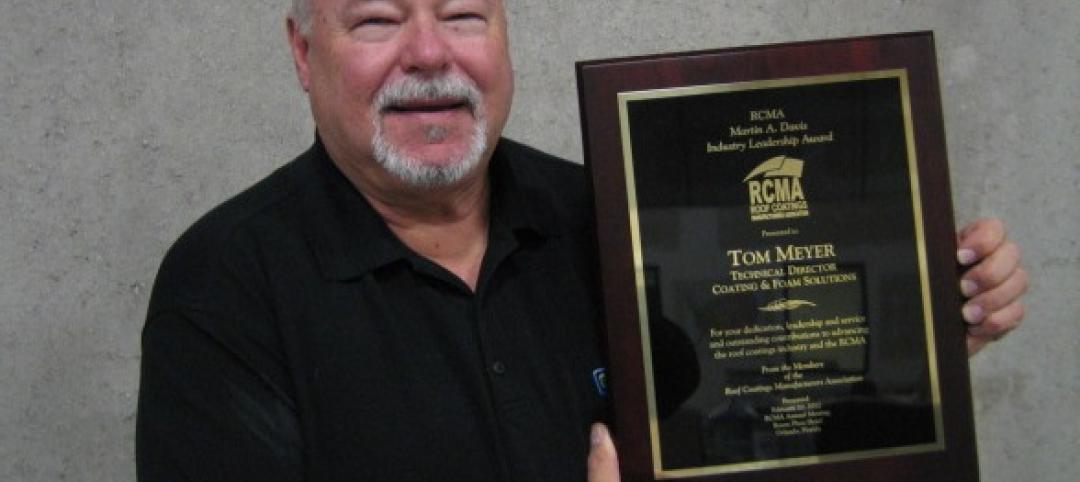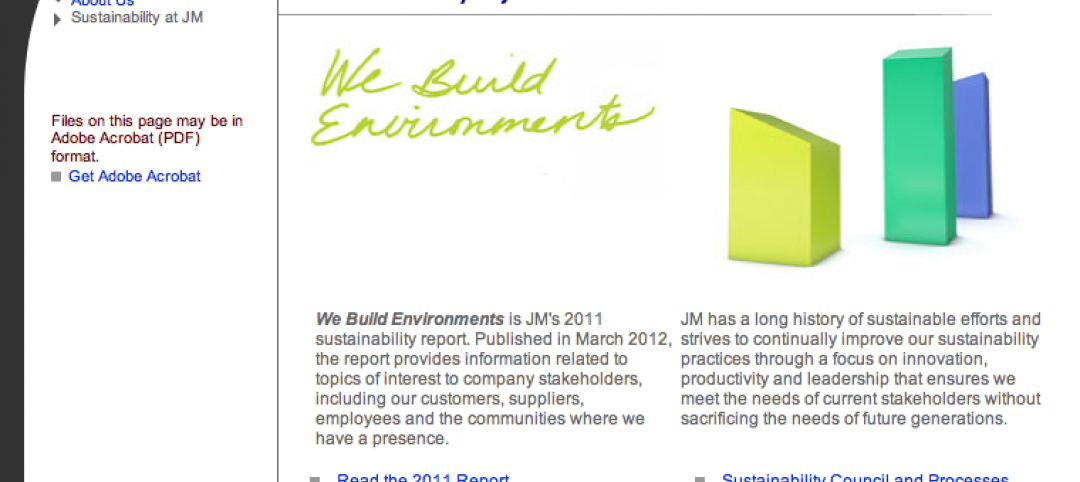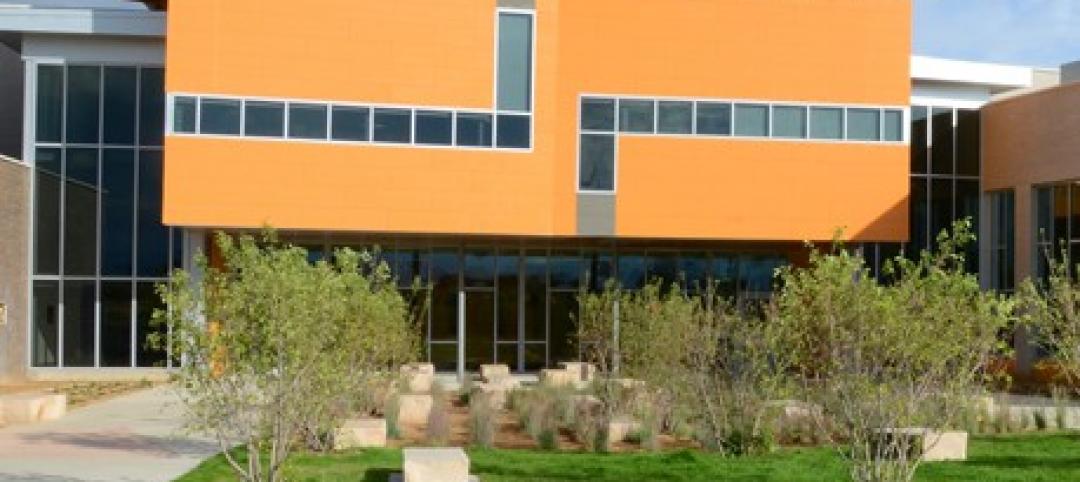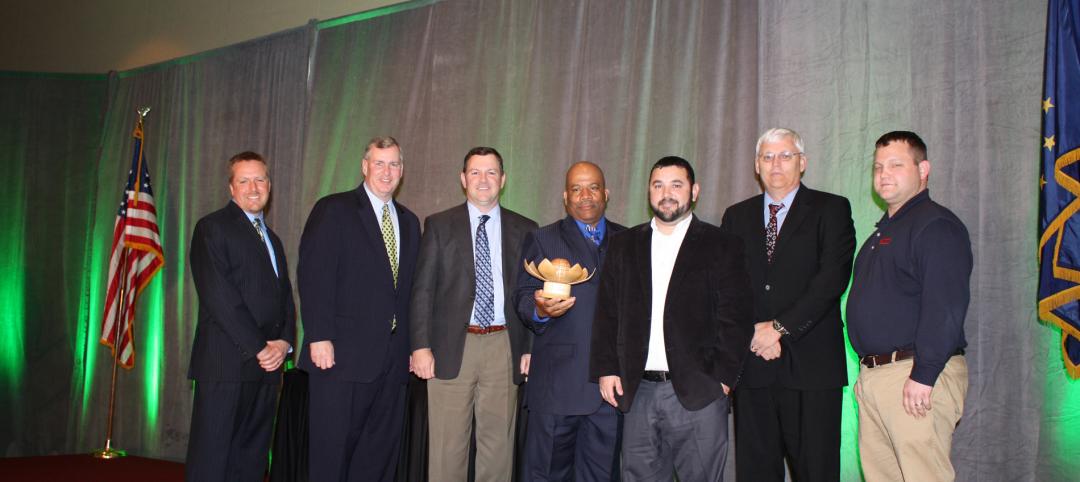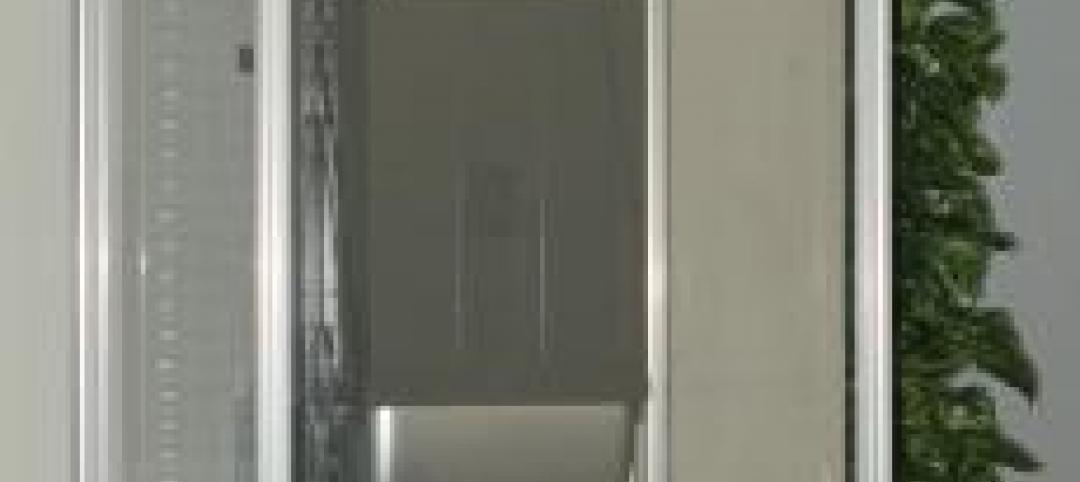When sports teams travel to a game, they battle fatigue, strange surroundings, and thousands of hostile, roaring fans. The home team meanwhile, rested, confident in their city and familiar with the facility, rides the fan energy that rocks their building when they step onto the field or court.
Home advantage can play a significant role in game outcomes. Players talk about it, coaches plan for it, Vegas odds makers calculate it. Team owners even ask architects to maximize it.
Here are six ways AEC firms can help create the conditions that draw big crowds, energize the home team to perform better, and disrupt visiting players:
1. Bring the fans in close
The closer the fans are, the more the players hear the noise, see the enthusiasm, and feel the energy. Venues can be designed to place stands as close to the court or field as possible, and steep-pitched seating bowls can bring the back rows closer to the action. The result: home teams feel the energy of the crowd as an extra player, while visiting teams must battle the added aural and visual distraction.
At JELD-WEN Field, seating extends to within fifteen feet of the pitch, and many fans stand and cheer virtually the entire game. After the Timbers’ home opener victory, head coach John Spencer said, “I don’t think you’ve seen an atmosphere like that in American soccer history. Ever. I think it was tremendous.”
2. Make it loud
Acoustic design maximizes the crowd’s ability to drown the opposing team in roaring noise, disrupt their communication and intimidate them. CenturyLink Field, home of the NFL Seattle Seahawks, has been dubbed the “loudest stadium in the NFL” thanks to a design that focuses crowd noise onto the field.
Foot stomping on the steel stands has been recorded by seismographs at comparable levels to a mini-earthquake. Over a 10-year period, there were 143 false-start penalties on visiting teams in Seattle, the most of any open-air stadium. During the home opener against the San Francisco 49ers on September 15, 2013, CenturyLink will be the site of an attempt sponsored by a fan group to break the Guinness World Record for loudest stadium crowd.
3. Make it easy to get there
How easily fans can travel to a venue is a big factor in filling the seats. Placing the venue in a centralized location well served by mass transit makes it more accessible. Brooklyn’s new sports and entertainment destination, Barclays Center, is one of the few urban venues in the U.S. with no dedicated parking. Instead, the arena can be reached by 11 subway lines, the Long Island Rail Road, and 11 bus lines. In their first season at Barclays Center, the Brooklyn Nets traded years at the isolated, and largely empty, Meadowlands Arena (and a two-year stint in Newark) for a packed house in a hot spot—and their first winning season in seven years.
In downtown Portland, Oregon, JELD-WEN Field, home of the MLS Portland Timbers, also has no dedicated parking, but receives extra service from the local metro system on game days. To sweeten the deal, season tickets—which have sold out every year since the renovated stadium opened and have a waiting list of thousands—include a transit pass.
4. Make it the place to be
More people in the building means more energy. Barclays Center demonstrates the difference between a typical sporting venue and an urban focal point where sports are the anchoring attraction. Home to the NBA Brooklyn Nets and soon the NHL New York Islanders, Barclays Center was designed to include amenities that broaden the appeal — four bar-lounges, three clubs, and the 40/40 CLUB & Restaurant by American Express make the venue a hotspot for nightlife and keep the place buzzing with celebrities and fans. In the Nets’ first season in the new facility, ticket sales increased 23 percent over the previous year, jumping from dead last over half of the teams in the league.
5. Make the home team feel at home
The quality of team amenities like locker rooms and training facilities makes a big difference in a team’s morale and self-image, which players carry into the field and into every play. Ultra-modern technology, high-end design finishes, and institutional identity imagery all contribute to athletes’ sense of belonging—in a facility, in a tradition, and in contention for their league’s highest honors. When the University of Oregon created the Matthew Knight Arena to replace a legendary basketball temple, it was critical that the facility modernize to the utmost while embodying the legacy of the previous building and the Ducks.
6. Get people excited
Venues that combine iconic architecture, local flavor and active public spaces give fans a stronger sense of connection and excitement. The dramatic post-Hurricane Katrina restoration of the Louisiana (now Mercedes-Benz) Superdome in New Orleans forever connected city and venue, building a reputation as one of the toughest away-game locations in the NFL. In 2010 the owners went a step further, adding Champions Square, a new public space conceived as the venue’s “front porch.” Designed in the tradition of New Orleans’ famous public squares, Champion Square hosts concerts prior to games, with the street festival atmosphere brewing excitement until fans fill the stadium and create what has been called the best home field advantage in the NFL.
Related Stories
| Apr 3, 2012
Meyer receives RCMA's Martin A. Davis Industry Leadership Award
The Martin A. Davis Industry Leadership Award is presented annually to an individual, selected by his or her peers, who has exemplified outstanding service and made significant contributions to the roof coatings industry.
| Apr 3, 2012
Johns Manville publishes 2011 Sustainability Report
Report covers JM’s long-time sustainability focus and progress towards goals.
| Apr 3, 2012
Educational facilities see long-term benefits of fiber cement cladding
Illumination Series panels made for a trouble-free, quick installation at a cost-effective price. The design for Red Hawk Elementary School stems from the desire to create a vibrant place for kids to learn. In an effort to achieve this design, RB+B Architects selected Nichiha USA to provide a durable yet modern, contemporary exterior finish.
| Apr 2, 2012
TGP launches new fire-rated glazing website
Website offers online continuing education courses registered with the American Institute of Architects (AIA), BIM 3D models, and rapid-response quoting, among other support tools.
| Apr 2, 2012
Gilbane honored for sustainability efforts in Indianapolis
Emmitt J. Bean Federal Center project team for their role in advancing sustainability in the city.
| Apr 2, 2012
Mitsubishi unveils ultra-high-speed elevator for Shanghai skyscraper
The operation of the elevator is scheduled to begin in 2014.
| Apr 2, 2012
Sachse Construction helps complete Salt Lake City’s City Creek Center
Sachse was hired to complete store build-outs at City Creek Center.
| Apr 2, 2012
Culver joins Sasaki as managing director
Culver will work closely with Sasaki firm leaders on issues of strategy, marketing, and business development.
| Apr 2, 2012
EB-5 investment funds new Miramar, Fla. business complex
Riviera Point Holdings breaks ground on $17 million office center.
| Mar 30, 2012
New windows and doors revitalize older buildings
With their improved aesthetics, energy efficiency, and durability, replacement windows and doors can add significant value to a renovation project.


